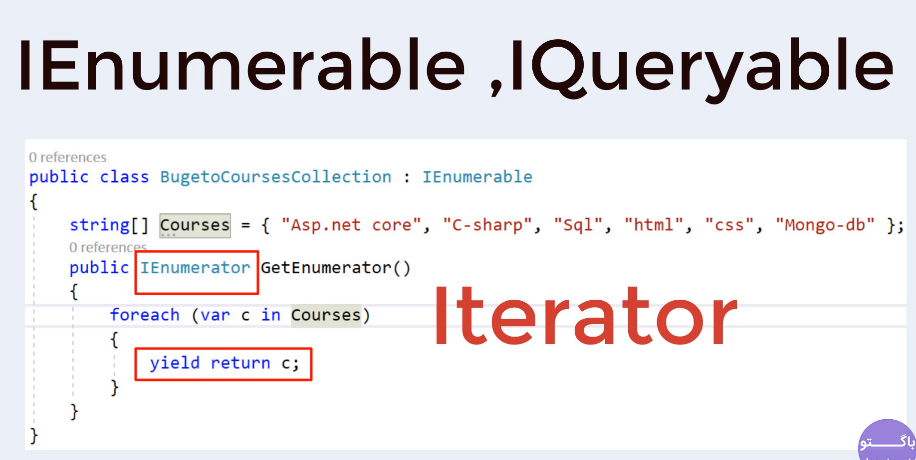

The Iterator Pattern is a design pattern that provides a way to access the elements of a collection object sequentially without exposing its underlying representation. In C#, this pattern can be implemented using IEnumerable<T> and IEnumerator<T> interfaces. Here’s a detailed explanation and example of implementing the Iterator Pattern in C#.
Components of the Iterator Pattern
-
Iterator Interface (
IEnumerator<T>):- Provides methods for traversing elements in the collection (e.g.,
MoveNext,Current,Reset).
- Provides methods for traversing elements in the collection (e.g.,
-
Aggregate Interface (
IEnumerable<T>):- Provides a method to create an iterator (e.g.,
GetEnumerator).
- Provides a method to create an iterator (e.g.,
-
Concrete Iterator:
- Implements the iterator interface to traverse the collection.
-
Concrete Aggregate:
- Implements the aggregate interface to return an iterator.